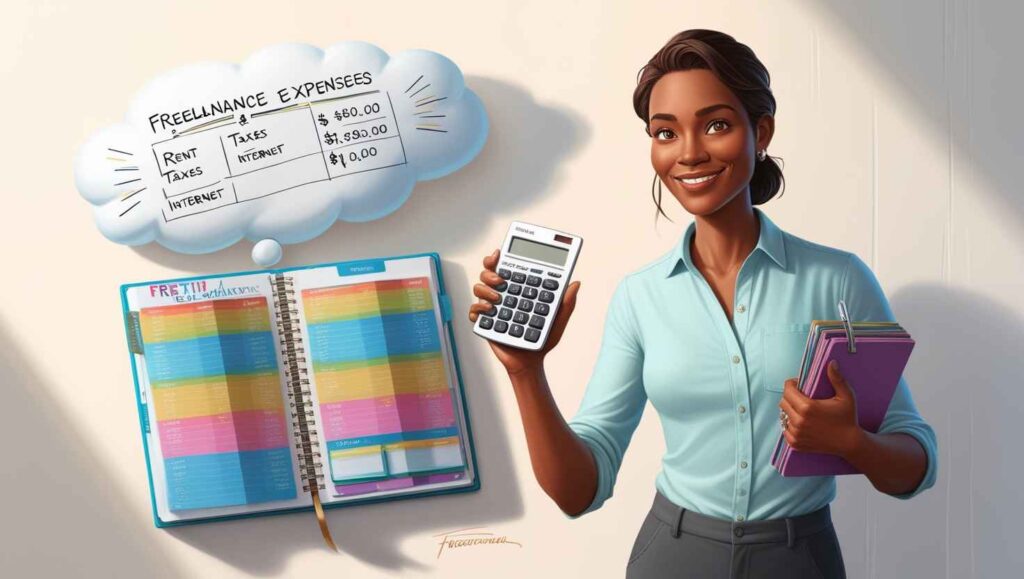Starting out as a freelancer can feel like diving into the deep end of an unfamiliar pool. One of the trickiest aspects of beginning your freelance journey is figuring out how much to charge for your services. It’s a delicate balancing act: charge too much, and you might scare off potential clients; charge too little, and you risk undervaluing your skills or even burning out from overwork. Let’s break it down into manageable steps to help you confidently set your rates as a beginner.
Understanding Your Value

As a freelancer, your time, skills, and effort all have value. But as a beginner, it’s normal to feel unsure about what that value is. The first step in setting your rates is understanding what you bring to the table. Even if you don’t have years of experience, you may have valuable skills, certifications, or expertise from school, internships, or personal projects.
Start by reflecting on what makes you unique. What skills do you have? Have you completed projects for friends, family, or classmates? Think about the time and energy you’ve invested in learning your craft. While you may feel like a beginner, you still have something valuable to offer.
Researching the Market
Before you decide on a number, it’s essential to know what other freelancers in your field are charging. Do a little research. Look at freelance job boards like Upwork, Fiverr, or Freelancer to see what others with similar skill levels are charging. Don’t forget to check social media platforms or freelance groups for additional insights.
When researching, consider factors like your niche, the type of clients you want to work with, and your geographic location. Rates can vary significantly depending on these factors. For example, graphic designers often charge differently than content writers, and someone freelancing in a city with a high cost of living might set higher rates than someone in a rural area.
Calculating Your Minimum Rate

Now it’s time to crunch some numbers. Your minimum rate is the lowest amount you need to earn per hour or project to cover your expenses and make freelancing sustainable. Start by listing your monthly expenses, such as:
- Rent or mortgage
- Utilities
- Groceries
- Transportation
- Internet
- Software subscriptions or tools for your work
Next, consider taxes. Freelancers are responsible for their taxes, so add around 20-30% to your expenses to account for this. Finally, decide how many hours you can realistically work each month. Keep in mind that not all your working hours will be billable—you’ll also spend time on administrative tasks, marketing, or learning new skills.
Once you have these numbers, you can calculate your minimum hourly rate:
(Monthly Expenses + Taxes) / Billable Hours = Minimum Hourly Rate
For example, if your monthly expenses and taxes total $2,000 and you plan to work 80 billable hours per month, your minimum rate would be $25 per hour.
Choosing the Right Pricing Model
Freelancers use various pricing models, and the one you choose can depend on your industry, preferences, and the type of work you’re doing. Here are three common options:
Hourly Rate
This is straightforward and works well for tasks with an uncertain time requirement. It’s a good starting point for beginners because it’s easy to calculate and adjust.
Project-Based Pricing
With this model, you charge a fixed amount for an entire project. It’s great for well-defined tasks where you can estimate the time and effort involved. Beginners often find this tricky at first but become more comfortable as they gain experience.
Retainer Agreements
A retainer involves charging a client a set fee for a specific amount of work each month. This model provides stability and predictability, but it’s usually easier to secure once you’ve built a solid client base.
Starting Low (But Not Too Low)

As a beginner, it’s tempting to set your rates as low as possible to attract clients. While it’s okay to charge slightly less than seasoned freelancers, don’t go so low that you struggle to cover your expenses or end up resenting your work. Remember, clients often associate low prices with low quality, so setting your rates too low might backfire.
One strategy is to start with competitive rates and gradually increase them as you gain experience and build your portfolio. You can also offer discounts to your first few clients as a way to gain testimonials and work samples without permanently undervaluing your services.
How to Communicate Your Rates
Talking about money can feel awkward, especially when you’re new to freelancing. But being clear and confident about your rates is essential. When discussing pricing with a client, focus on the value you’re providing rather than just the cost. For example, instead of saying, “I charge $30 per hour,” you could say, “For $30 per hour, I can provide high-quality content that engages your audience and boosts your online presence.”
If a client questions your rates, stand firm but polite. Explain what goes into your pricing, including the time, effort, and skills required to complete the job. Avoid the urge to immediately lower your rates; instead, consider adjusting the scope of the project to fit the client’s budget.
Knowing When to Raise Your Rates

As you gain experience, improve your skills, and build a reputation, your rates should grow too. Here are a few signs it might be time to raise your rates:
- You’re Fully Booked: If you have more work than you can handle, it’s a sign that your services are in demand.
- You’ve Upgraded Your Skills: Certifications, new tools, or specialized knowledge justify higher rates.
- You’re Getting Positive Feedback: Happy clients and repeat business indicate that clients value your work.
When raising your rates, communicate the change clearly to your clients and give them advance notice. For example, you might say, “Starting next month, my rates will be increasing from $30 to $40 per hour to reflect the additional value I bring to my projects.
If you want to know How to Get Your First Client on Upwork
FAQs
Q: How much should I charge if I’m just starting out? A: It depends on your field and location, but a good starting point is $15-$25 per hour. Research your niche and adjust as needed.
Q: Should I work for free to build my portfolio? A: Working for free can help you gain experience and testimonials, but be selective. Only take on projects that genuinely add value to your portfolio.
Q: What if a client says my rates are too high? A: Explain the value you provide and offer to adjust the scope of work if necessary. Avoid lowering your rates without a good reason.
Q: Can I charge different rates for different clients? A: Yes, rates can vary based on project complexity, client budget, or the unique value you bring to each client.
Q: How often should I reassess my rates? A: Reassess your rates every 6-12 months or whenever you’ve gained significant experience or skills.
Final Thoughts
Setting your freelance rates as a beginner can feel daunting, but it’s a skill you’ll improve with practice. Start by understanding your expenses, researching the market, and choosing a pricing model that suits your work style. Don’t be afraid to adjust your rates as you grow, and always remember to value your time and skills. With time, you’ll find a pricing strategy that works for you and supports your freelance goals.
